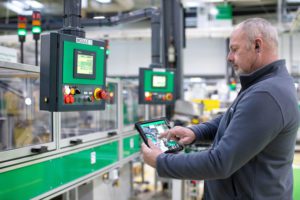Across key process industries today, running a digital business means enabling higher degrees of business agility, optimizing performance, and establishing competitive advantage. The digital technologies that support such business improvements can include intelligent sensors that gather and forward data, edge and cloud computing, analysis software and artificial intelligence (AI), and digital twins to accelerate design and maintenance.
The next-generation industrial companies are already experiencing step-change advancements that we could only dream of a decade ago. Such Industries of the Future strive for digital continuity. They connect and digitize all key processes- from the electrical and mechanical design on the front end to production operations and maintenance and support phases on the back end. This drives faster and more accurate decisions and more flexible and agile production changes thanks to an end-to-end connected lifecycle.
Investing in a digitized technology base also enables industrial businesses to improve efficiencies, lower costs and create new business models by implementing an “everything as a service (XaaS)” approach.
Industrial XaaS helps drive digital business
The XaaS concept started when global platforms, like Microsoft and Amazon, offered their users “on-demand” software-driven services. In the industrial context, XaaS means driving business value through machines, processes, tools, software, and technology platforms without purchasing and owning those assets. Also, the integrated digital connectivity of this concept brings benefits like regular updates and improvements, which takes the user experience to the next level with the latest technology.
Instead, the assets are managed by qualified third parties with specialized domain expertise. This enables the end user to convert high up-front CapEx into longer-term OpEx while focusing more directly on their core business production priorities.
In today’s industrial environments, Process OEMs are uniquely positioned to deliver a new wave of digital-driven services that both industrial manufacturers and end users seek.
Their deep understanding of production applications across specialized industries and their ability to integrate upstream and downstream industrial processes offer high business value to the end user.
Process OEMs can help their customers accelerate digitalization efforts through these service offerings. By opening the doors to more digital businesses, they provide more efficient delivery of business value to the end users while helping them increase overall sustainable performance.
In sustainability, innovative software platforms help users reduce energy costs, carbon emissions, and the usage of important water and chemical resources. Plant and enterprise-wide data collection from energy sources and assets provide a complete contextual analysis of energy consumption at all levels.
Further efficiency and sustainability benefits can also be achieved through digital power and process integration. By enabling high-precision energy forecasting, profitable energy purchasing decisions can be made, and the ability to benchmark energy KPIs become a reality. The software also allows operators and energy managers to visualize how to conserve energy across plant-wide processes.
Digital business is aided by brand-agnostic development tools and software
How does an integrated partnership between process OEMs, technology suppliers, and industrial end users work to enable digitization acceleration?
When end users develop new processes and products, they want to easily and quickly integrate the new technology with existing legacy technologies without investing large quantities of up-front capital. They also want to ensure that their business performance is more predictable.
Process OEMs are a trusted source of on-site technologists for the end users. With key technology suppliers like Schneider Electric, process OEMs can now deliver lifecycle services (e.g., upgrades to digital solutions, remote monitoring of operations and production assets, and implementation of predictive maintenance).
This new ability of process OEMs to offer best-in-class technologies and services is further enhanced by technology providers’ ability to provide agnostic software and IIoT platforms. Solutions such as EcoStruxure Automation Expert easily decouple innovative production software from any hardware-installed base. This greatly facilitates software and IT/OT integration while simultaneously enabling the flexibility to integrate and distribute the software across different hardware platforms.
As a result, discrete, hybrid, and process industries in sectors like food and beverage and pharmaceutical, chemicals, mining, minerals and metals, oil, or water and wastewater, can now seamlessly run software automation products regardless of the hardware installed base currently used. Instead of maintaining code across different brands, plant engineers can focus on improving and innovating their processes.
Process OEMs benefit from this “openness” as their customers may run technology assets supplied by different manufacturers. They need to maintain multiple programming efforts across the various brands of platforms, a significant time-consuming task. Using brand-agnostic solutions can significantly reduce engineering time so they can focus more on optimizing their technologies and crafting more innovative solutions.
ROI scenario example
The power of the process OEM and technology manufacturer digitization partnership can be demonstrated across the optimization of food and beverage Clean-in-Place (CIP) operations. These types of technologies help to avoid the issue of food contamination and make it much easier for operators to monitor and trace the sequence of CIP events. Determining which equipment was cleaned when, for how long, and how much water and chemicals were used takes minutes instead of hours. This means that operational decisions impacting profitability can be taken much faster.
With CIP Advisor, process OEMs can bring incredible value to manufacturing plant CIP lines by running “what if” simulations demonstrating how much time and resources like water, energy, and chemicals can be reduced when programming or product changes are introduced into the system. They can then calculate a clear, tangible return on investment before spending money on upgrades.



